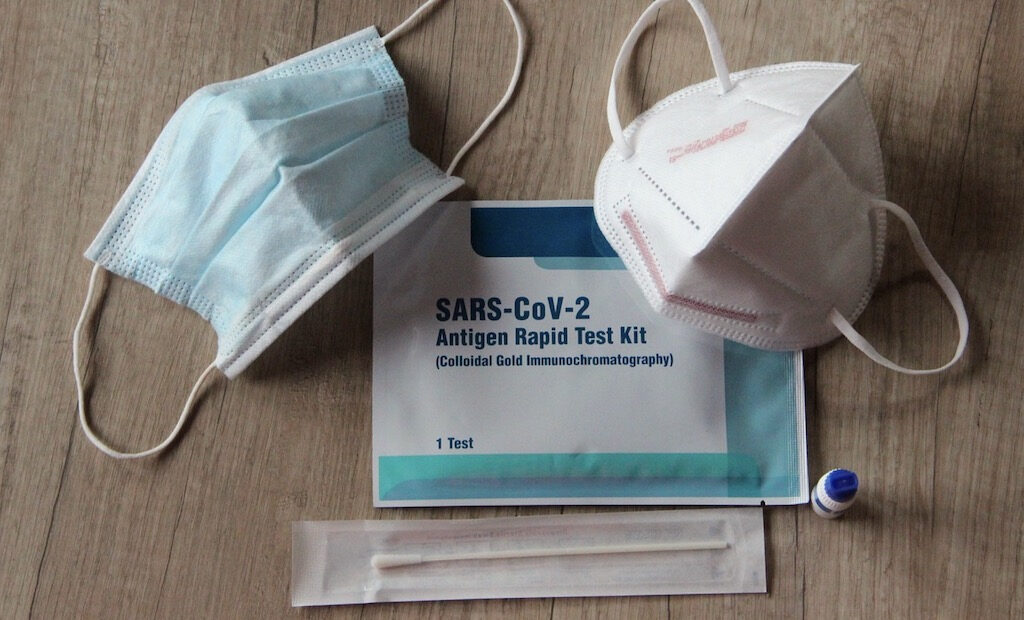Covid-19 home tests: What you need to know

As the world continues to grapple with the Covid-19 pandemic, the UK health system has taken it a notch further by developing scalable home tests to ramp up mass testing efforts.
These are particularly useful for individuals who suspect or have been in contact with infected persons.
The tests are a superb method of early detection of the virus, which arms users with critical knowledge on what measures to take to protect themselves and the loved ones.
However, a recurring question has been what types of tests are available, how they work and whether they can be used on younger people.
The different types of Covid-19 home tests and how they work
There are two broad categories of Covid-19 home tests:
- Tests that detect current infection; and
- Tests that detect past infection or exposure to the SARs-CoV-2 virus.
Each of these tests has its role to play.
- Testing for current infections aims at isolating and getting positive patients the required medical attention or additional testing if necessary.
Covid-19 home tests which target current infections are known as Rapid Antigen tests or lateral flow tests.
- On the other hand, tests that detect past infections or exposure to the virus are instrumental in identifying the recovered and the asymptomatic persons among us.
Past Covid-19 exposure home testing is done using antibody test kits. The importance of antibody testing will be discussed shortly.
How Covid-19 home tests work
Rapid antigen home tests
Rapid Antigen tests are molecular diagnostic tests that analyse proteins produced by the SARs-CoV-2 virus.
The presence of such proteins (known as nucleocapsid proteins) signifies the virus’s presence in one’s body.
One of the best Antigen Tests in the market is the Healgen Covid-19 Rapid Antigen test.
It comes packaged in a kit with all the equipment necessary for the test. It’s possible to do the test at home or enlist the help of a clinician or health professional.
To administer it, mucus or saliva samples need to be collected from the individual getting tested. This collection is done using a long cotton swab contained in the kit.
The sample swab has to be dipped into a test solution, which also comes with the kit and let it rest for some minutes.
Later, pour four drops of the resulting solution into the testing well and wait for the results to be displayed on the results window.
Antibody tests
Antibody or serology tests work by detecting the presence of disease-fighting antibodies in a person’s body. The body usually makes these antibodies following its exposure to a particular pathogen.
In Covid-19 cases, persons with prior exposure to the virus develop antibodies to guard them against the virus in the future.
Whether the antibodies afford the recovered patient immunity against a resurgence of the Coronavirus disease is still yet to be determined.
An excellent example of a reliable antibody test is the Healgen Covid-19 Rapid Antibody Test.
Antibodies are detectable 1-3 weeks after infection. Therefore, unlike the Rapid Antigen test, the Rapid Antibody test is designed to screen individuals for SARs-CoV-2 antibodies.
This test requires blood samples which may be obtained from a finger prick.
Like the antigen test, the Healgen Rapid Antibody Test kit contains all the supplies necessary in conducting the test.
More information on how to conduct the test is available here:
Both the Healgen Rapid Antigen test and the Rapid Antibody tests take 10-15 minutes to administer and can be done at home or by a health professional.
Can the test be used on younger people?
It’s always best to check with a healthcare professional. The Healgen COVID-19 home tests are said to be safe to use on children of any age subject to observance of the kits’ instructions.
Although the sampling process may cause slight discomfort, it is painless.
The test is safe for use on any person, save for those known to have blood-related health problems such as hemophilia or hemochromatosis.
Such individuals are advised to contact their health professional first before using these tests.
Also, there’s no need to freeze these tests, as they can be conducted at room temperature.
The ideal storage conditions for the Healgen Covid-19 Rapid home tests is anywhere between 2º- 30ºC.
After testing, what then?
After going through the entire process as per instructions, the results will appear on the results window on the test cassette.
These take the form of horizontal bars.
- If two or more bars appear on the screen, it means that the person has tested positive and they should immediately:
- Isolate them and seek medical intervention.
- Inform anyone who has been in contact with the infected child to get tested right away.
- Sanitise all the surfaces that the patient may have touched.
- Have every member of the child’s household practice social distancing and wearing face masks even when indoors.
- As much as possible, have the child wear a face mask.
- Until the child receives a clean bill of health, keep the child away from vulnerable persons; such as individuals with pre-existing medical conditions or the elderly.
Self-isolation takes a minimum of 10 days or until the person tests negative.
- If one horizontal bar appears on the control line of the results screen, that is a negative result and the individual should continue observing the Covid-19 safety protocols.
These include regular hand washing, maintaining social distance from other persons and wearing face masks.
- However, should there be no bars on the results window, then that test is deemed invalid and of no consequence. That means that the test should be repeated using fresh test materials.
The cause of invalid tests is the improper observance of instructions and it is therefore critical to observe the procedure laid down by the manufacturer.
The editorial unit























Facebook
Twitter
Instagram
YouTube
RSS